Trusted By Companies Worldwide & 32,052+ Learners


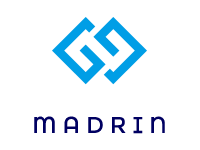

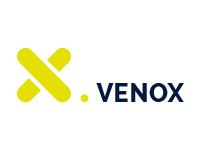
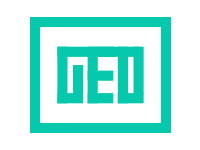





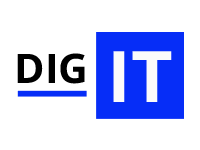
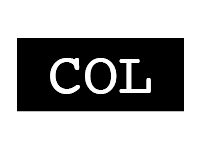
Duration
30 Hrs
Live Projects
2
Next Batch
Monday
DevOps Course Overview
DevOps Training offered by US IT Skills makes you expert in different aspects of Software development life cycle, IT operations, continuous integration and testing. It will help you in making both development and operations teams work in an identical environment. DevOps course makes you master various concepts like build automation, integrating the code changes automatically, Accelerating the product delivery, etc. In this course, you will get real-time knowledge about tools like Nagios, Jenkins, Vagrant, Puppet, Chef, etc.. The experience on these skills makes you clear the DevOps Certification.
1200+ Students
DevOps Course Curriculum
- What is DevOps?
- History of DevOps
- Advantages of DevOps.
- DevOps and Software Development Life Cycle
- DevOps main objectives
- DevOps on the Cloud
- Prerequisites for DevOps
- Frameworks for Devops
- Basics of UNIX and Linux Operating Systems
- Linux System administration introduction
- Tools (Jenkins, Chef, Docker, Vagrant , Nagios,and so on.)
- Continuous Testing and Integration
- Continuous Release and Deployment
- Continuous Application Monitoring
- History and evolution of cloud
- Cloud computing concepts
- Grid Computing vs. Cloud Computing
- Characteristics and Benefits of Cloud
- Cloud service models (NIST)
- IaaS, PaaS and SaaS
- Cloud service model implementations
- Cloud Deployment Models (NIST)
- Virtualization
- Virtual Machines
- Virtual bootable OS Images
- Cloud Storage
- SOA and Cloud
- Virtual Private Cloud (VPC)
- Risk in Cloud and DevOps security concerns
- Introduction to AWS and AZURE
- CRITERIA
- Things to Look For and Avoid
- IT Assets Ownership
- Viewing Applications As Products, not Projects
- DevOps in the Enterprise
- IT Governance
- Governance and Risk Mitigation
- DevOps Adoption Steps
- Select DevOps Techniques and Practices
- Service Quality Metrics
- TOOLS
- The Choice of Cloud Platform
- IaaS for DevOps
- PaaS for DevOps
- Containerization Tools
- System Configuration Automation and Management
- Continuous Integration (CI) Systems
- Build and Dependency Management Systems
- Select DevOps Tools
- Collaborative Lifecycle Management Solutions from IBM
- Rational Team Concert (RTC)
- Rational Quality Manager (RQM)
- Rational DOORS Next Generation (DNG)
1)Overview of Chef
- Common Chef Terminology (Server, Workstation, Client, Repository etc.)
- Servers and Nodes
- Chef Configuration Concepts
2)Workstation Setup
- How to configure knife
- Execute some commands to test connection between knife and workstation
3)Organization Setup
- Create organization
- Add yourself and node to organization
4)Test Node Setup
- Create a server and add to organization
- Check node details using knife
5)Data bags
- How to create Data bags
- Add Data bags to organization
- Node Objects and Search
- How to Add Run list to Node
- Check node Details
6)Environments
- How to create Environments
- Add servers to environments
7)Roles
- Create roles
- Add Roles to organization
8)Advanced Chef
- What is food critic and Test Kitchen
- Improve and expand on the existing recipes
- One-click system launching
1)Introduction to Puppet
Installation and Configuration of Master server and agents
Managing Manifests
2)Creating and Managing modules
3)Version control with Puppet
- Introduction
What is Vagrant - Uses of Vagrant in an environment
- Installation and Configuration
- How to install Vagrant in Windows and Linux
- Configure Vagrant
- Provisioning with Vagrant
- How to use Vagrant to create small virtual
- Add required Images to Vagrant
- Using Vagrant
- Using Vagrant in Chef for Testing
- Source Code Management- GIT & Nexus
1)GIT REPOSITORY
- What is a version control system?
- What is a distributed version control system?
- Installation
- Different levels of Git configuration
- The process of staging and committing
- The details of the commit objects
2)NEXUS
- Nexus prerequisites
- Installing and Running Nexus
- Using the Nexus User Interface
1) INTRODUCTION TO JENKINS-CI
- Continuous Integration with Jenkins Overview
- Installation
- Configure Jenkins as stand-alone application
- Configure Jenkins on an Application Server
- Jenkins management
- Support for the Git version control systems
- Different types of Jenkins Jobs
- Setting up a Jenkins job
- Scheduling build Jobs
- Maven Build Scripts
2)Securing Jenkins
- Authentication
- Authorization
- Confidentiality
- Creating users
3)Jenkins Plugin
- Installing Jenkins Plugins
- SCM plugin
- Build and test
- Analyzers
4)Distributed builds with Jenkins
5)Best Practices for Jenkins
1) NAGIOS
- How to monitor the Servers in Nagios
- Trigger Alerts in Nagios
- How to apply blackouts and remove blackouts
2) ZENOSS
- How to monitor the Servers in Zenoss
- Trigger Alerts in Zenoss
- How to apply blackouts and remove blackouts
- How to check events; CPU,Memory and RAM Graphs for servers
- Devops: Application Architecture
- Web Forms
- User Controls
- Shared UI Code
- Business Logic
- Configuration Management
Configuration Management Activity
- Configuration Control
- Incident Management
- Change Management
- Problem Management
- General environment setup steps in AWS & NTTA
Creating Servers and Networks in Cloud
- Setting up rules and Application
- Difficult Scenarios in environments.
Scaling
- Environment testing
- Monitoring logs
